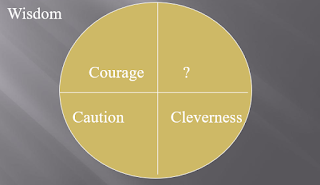This is the second in a series on vocabulary instruction. You can find Part 1: An Overview here.
 |
| Dr. Seuss or Russ Walsh? |
What constitutes a conceptual approach to vocabulary instruction? A concept may be defined as an idea of something that is formed by mentally combining all its characteristics and particulars. So the concept global warming includes such characteristics and particulars as pollution, climate, carbon dioxide, ozone layer, greenhouse gasses, carbon fuels, emissions, methane and on and on. Of course, each of these words is its own concept, so vocabulary growth is a continuing process of refining of the characteristics and particulars of an almost infinite number of concepts. The point is that children learn vocabulary best through the linkages that are provided by learning new words around a particular concept.
On March 2 of this year I was invited to participate in Read Across America Day in my old school district. In one pre-school class I entered I was immediately identified as the real Dr. Seuss. One clearly very exited child ran up to me and cried, "Dr. Seuss are you going to read to us today?" The teacher, Mrs. Clewall, had shown the children a picture of Dr. Seuss earlier in the week. As a result, the children had a concept of Dr. Seuss as an older, gray-haired, bearded man with glasses. I fit the bill. I began the class with a discussion of same and different and the children discovered that while I indeed was an older, gray-haired, bearded man with glasses, I was also different from Dr. Seuss in that I had much less hair, different glasses, and a rounder face. Hopefully, the children's concept of old guys who like to read and write books expanded a bit.
In the first grade class I visited I chose to read Zomo the Rabbit, by Gerald McDermott. This West African trickster tale is the story of a clever little rabbit who goes on a quest for wisdom. I decided that I would introduce the story by having the children explore their understanding of three words: smart, clever, wisdom. Clever and wisdom feature prominently in the story, but I began with smart because I thought it would give me the best chance to bring all the children (in a class I was meeting for the first time) into the conceptual area of focus: the pursuit of wisdom. Through a series of sit and thinks and turn and talks the children discussed the three words and came up with some tentative definitions. Most agreed that smart meant knowing a lot of stuff and clever meant knowing how to solve problems. Wisdom was more of a challenge for most kids, but one child volunteered that it had to do with spending a long time learning about important things.
With that I read the story to the children. In his pursuit of wisdom, Zomo has to do three impossible things, which he is able to do because of his cleverness, but along the way he also gets his jungle friends, Big Fish, Wild Cow, and Leopard, very angry. He learns that wisdom takes more than cleverness and more than courage, it also requires caution and good sense. After the reading we revisited our three words and the students demonstrated a growing understanding of what wisdom might entail. A little cleverness, a lot of knowledge, some caution, and lots of good sense.
This is a sample of what approaching vocabulary from a conceptual base looks like. If we wanted to structure the lesson more formally we might want to employ concept circles to make the connections clear for the students. There are three types of concept circles.
The first asks the student to name the concept given the words within the circle.
Concept circles, and a conceptual approach to learning vocabulary helps kids assimilate new words into already existing concepts, making their concepts more sophisticated and arming them for more and more sophisticated and nuanced understanding and uses of the language.
In part 3 in this series, I will continue our exploration of vocabulary instruction from a conceptual base.



No comments:
Post a Comment